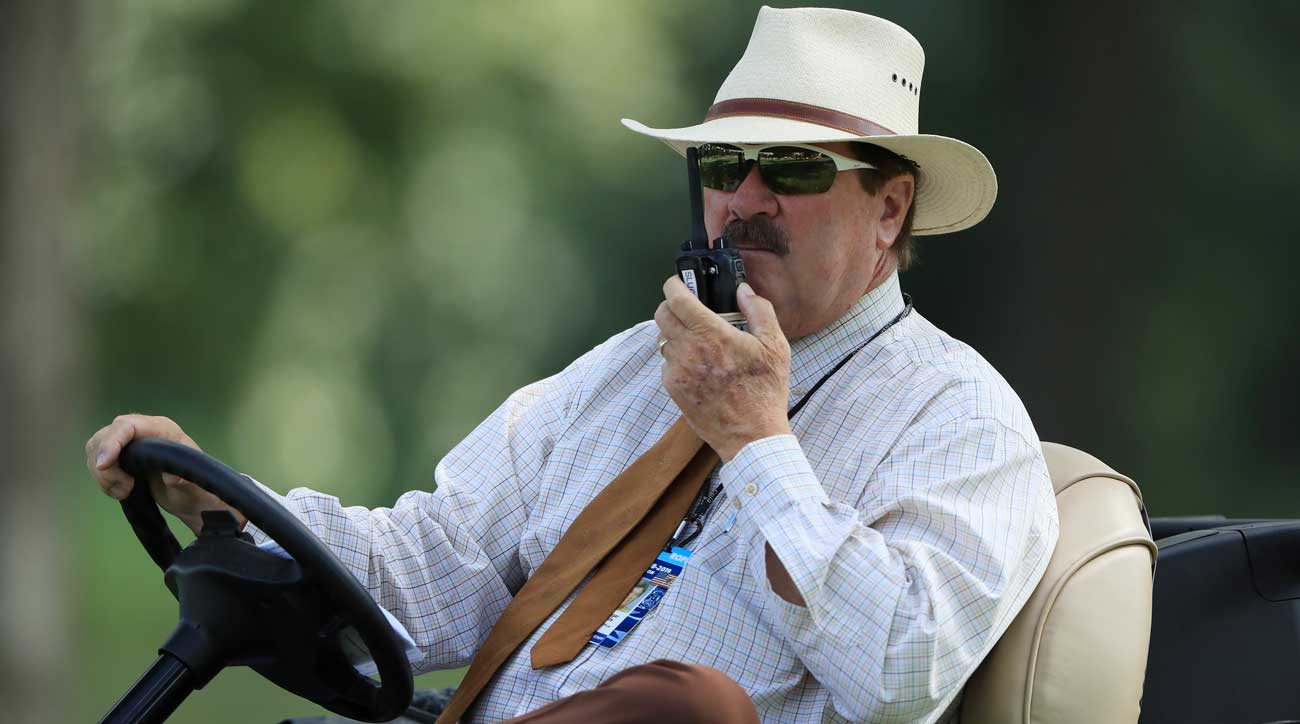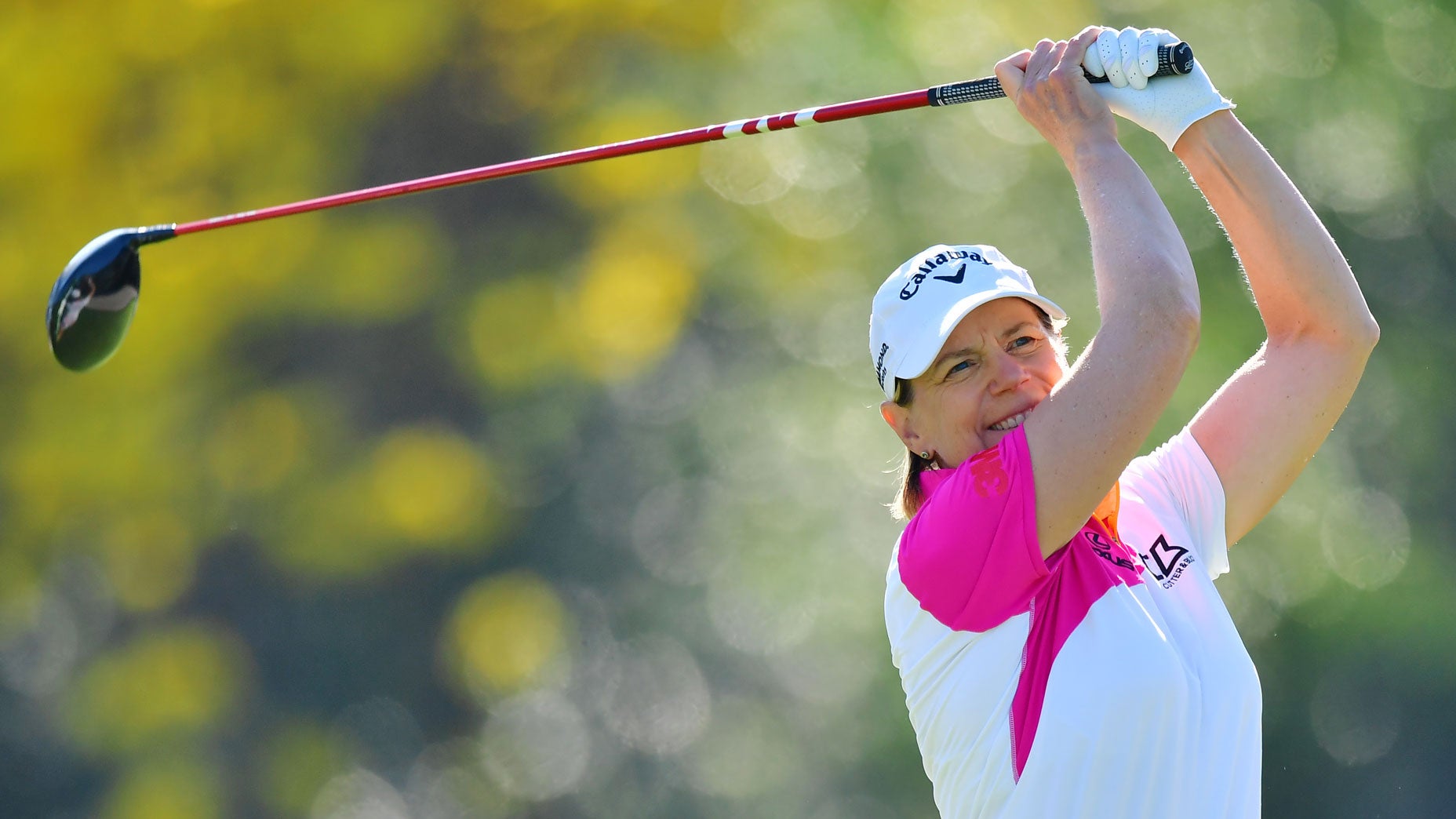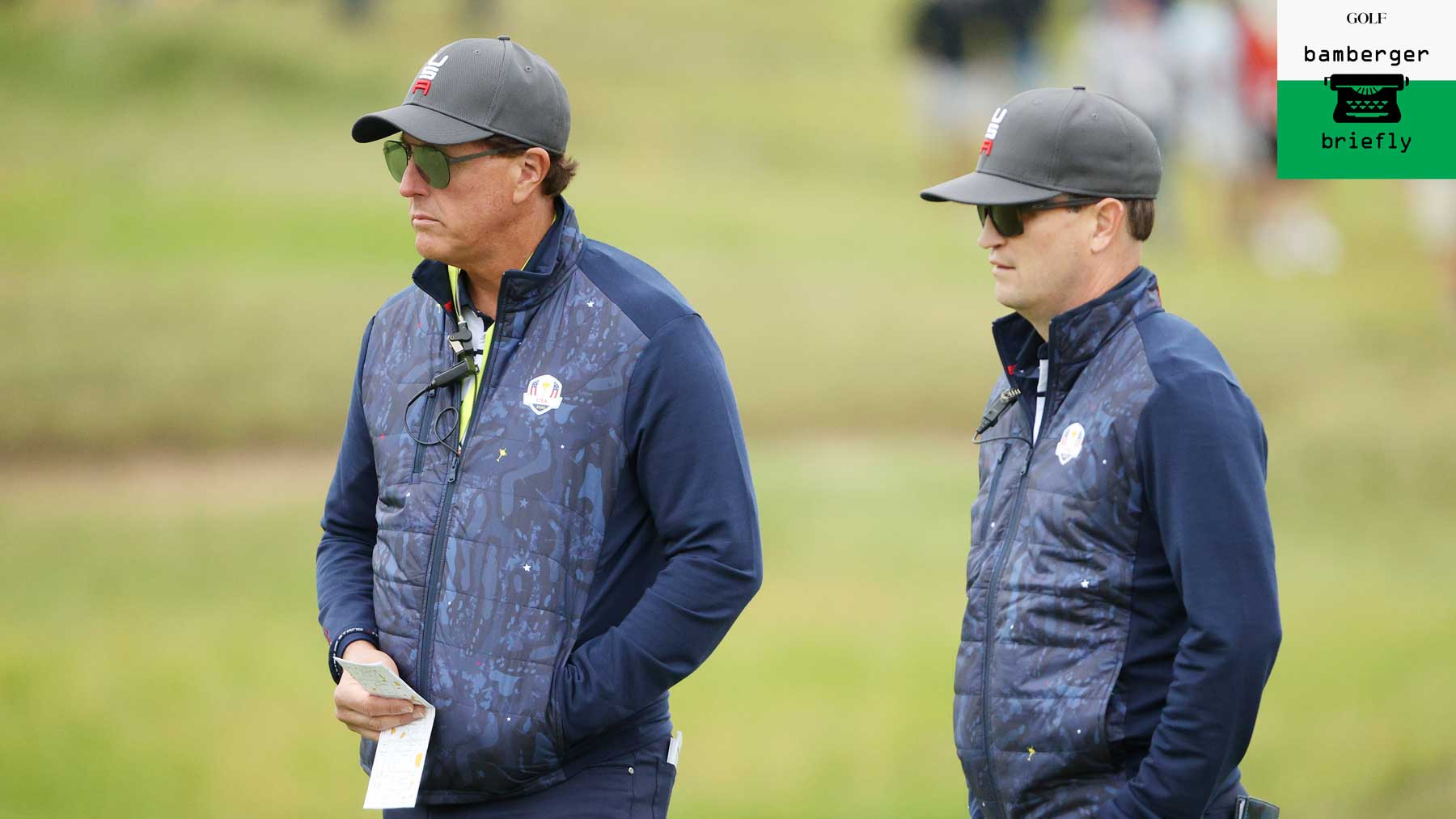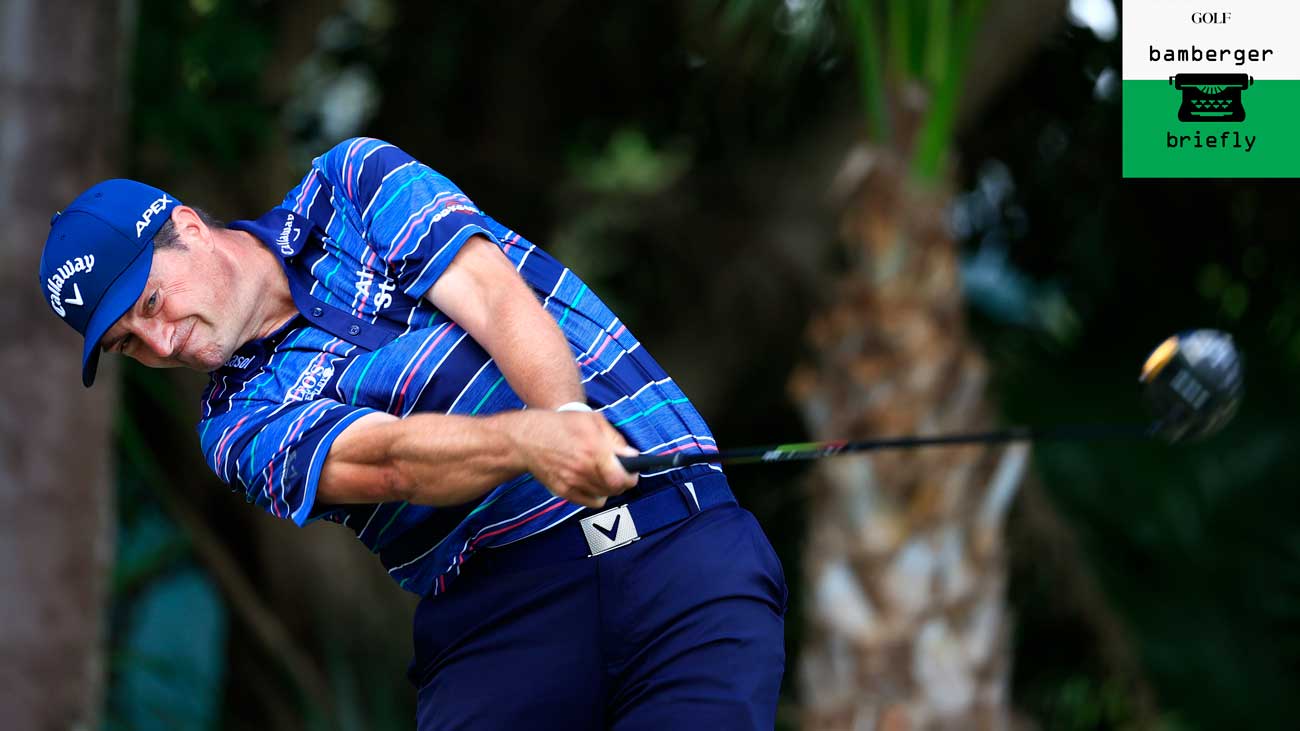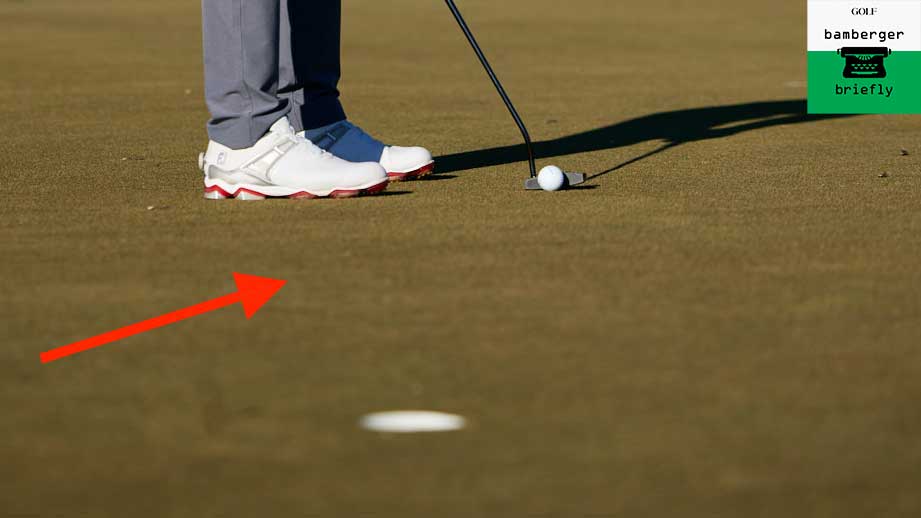For 40 years, PGA Tour rules official Slugger White has lived his life by the book
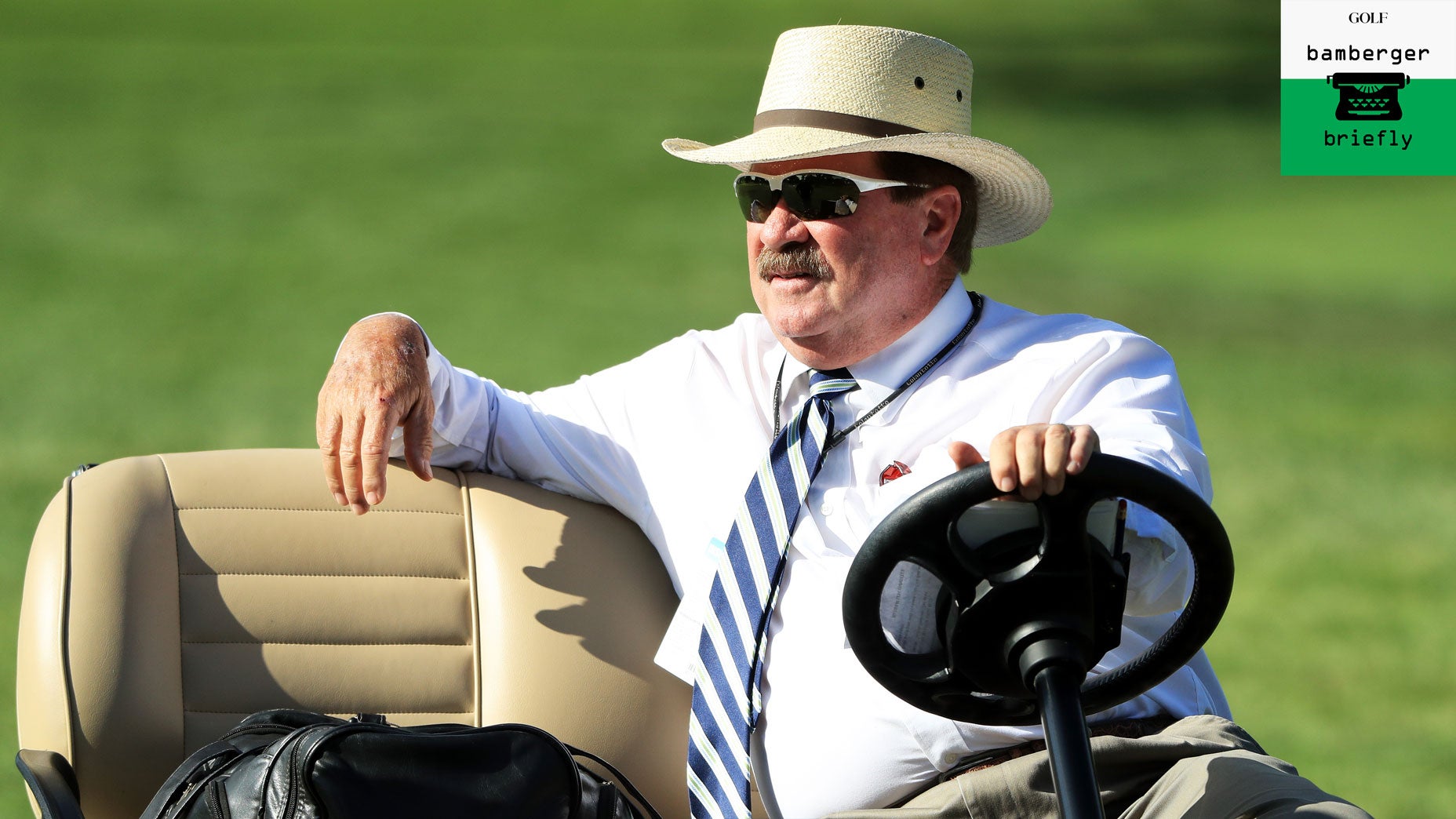
Slugger White’s 40-year career as a PGA Tour rules official ended with his final ruling at the WGC-FedEx St. Jude Invitational.
Getty Images
The first solo ruling Slugger White ever made as a PGA Tour rules official was on the 12th hole at the old San Diego Open, late January, 1982. Big Jack, at the height of his powers.
“There he is, Jack Nicklaus, with those steely blue eyes, looking at me and saying, `What’s this?’”
“It’s a French drain,” Slugger told him. He wasn’t wearing the big hat then. That came later.
“What do I do?”
“You drop.”
“Where do I go?”
“No closer to the hole, full relief.”
“Are you sure?”
“I’m sure.”
And Slugger White was off and running. His second career.
His first was as a player. He tied for fourth in the Texas Open in 1976. He was paired in the last round with Hale Irwin, who won it. Slugger made some mistakes on his way to the 72nd hole, as players do. Once since then, Irwin has said to White, “Remember that tournament I won that you should have won?”
Yeah, Slugger can recall it. Golfers are funny that way.
Slugger White’s last ruling was at the WGC-FedEx St. Jude Invitational. (Mouthful tournament names are not a new development. San Diego in ’82 was the Wickes-Andy Williams San Diego Open, won by Johnny Miller.) Bryson DeChambeau. Sixth hole. Saturday round. DeChambeau was over the green. He had a low fence in his way. (No relief. Too far from the fence.) He had a TV tower in his way. (Full relief. Not a thing that’s normally there.) Bryson decided to play it as it lies. He liked his lie and his chances.
That was easy.
For Slugger, most of them are easy.
The rulebook is complicated when you get lost in its details but not when you’re living and breathing the game, as White has done all his life. The game’s instinct for fairness usually tells you the right course of action, White says.
“A guy is taking relief, and he wants to know why he has to take full relief,” Slugger said. Some years ago, Rory McIlroy said the requirement to take full relief from a drop was a “stupid rule.” Others have said the same. Slugger will tell you, in everyday language, why it’s not: “You want to get away from that messy situation. So you take full relief. If you don’t, and you drop it in a bad spot but you’re in play, you’re gonna blame the rule or the drop. But once you take full relief, you can’t blame the course. It’s on you.”
Slugger has been liked and respected by players over the years because he is confident, knowledgeable and because of his trademark first question upon arrival: How can I help? Even if he doesn’t say it, that’s what his presence represents and the players know it.
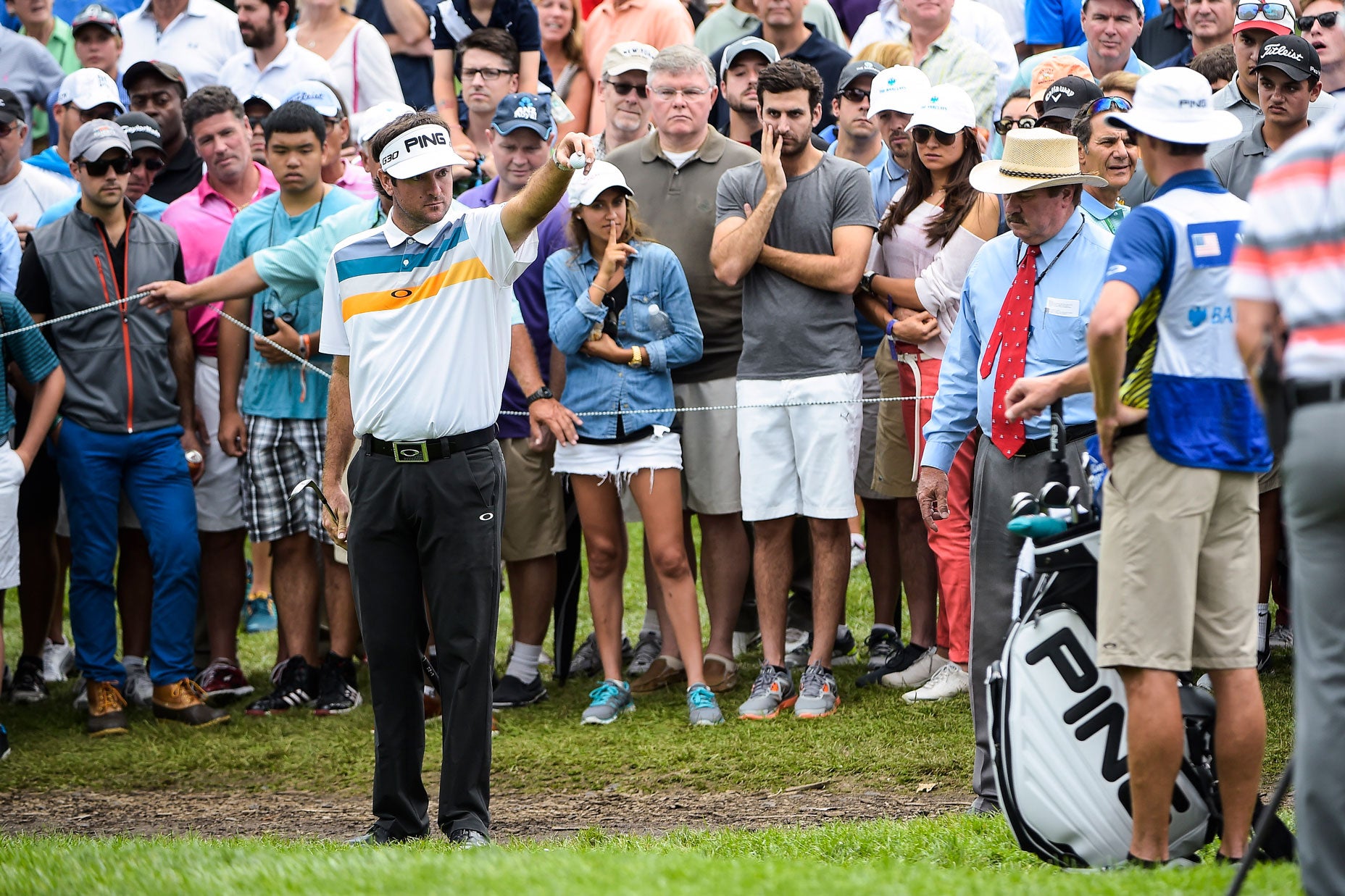
“I’m there to help, the rules are there to help,” Slugger said in a phone interview on Wednesday. He was in Ormand Beach, Fla., where he has lived for decades.
You could take another view, and use more austere language: the rules are there to ensure a fair competition for every player in the field. But Slugger’s approach is a kinder and gentler one, even if the upshot is the same. Hence, the 40-year career.
He’s never known an approach to the game other than complete fidelity to the rule book. This has been said a thousand times: without it, the game — the game of serious competitive golf — falls apart. White never had to learn the importance of playing by the rules.
“My father was a good player, and he was a stickler for the rules, so it’s all I ever knew,” Slugger said.
In the mid-1970s, White was a rabbit trying to make it. He was playing in a Monday qualifier for a Tour event called the Ohio Kings Island Open in Mason, Ohio. The qualifier ended in a playoff. White was in the playoff. He got through the playoff successfully — he was in the tournament. A big deal. When you’re trying to get Tour status? A huge deal.
He got back to his hotel room. Maybe it was a motel room. Who can remember anymore? That’s not important. But this is:
In the Monday qualifier, he and Woody Blackburn were sharing a caddie. In the room, Slugger was going through his bag. Woody Blackburn’s wedge was in Slugger’s bag. The caddie had put it, by mistake, in Slugger’s bag. But that meant Slugger had 15 clubs in the playoff. He called Blackburn, to return his wedge to him. He and Craig Stadler were sharing a room, to cut expenses. There was a lot of that, then. He called Wade Cagle, a Tour rules official.
Would he have wanted a different outcome? Of course. But a ruling is a ruling. Then and now.”
“This might be an extenuating circumstance,” Cagle told him. “Let me check it out.”
The next morning, Slugger saw Fuzzy Zoeller.
“Wade’s looking for you,” Fuzzy told Slugger.
Slugger didn’t know whether to expect good news or bad. He found Cagle.
“We called the USGA. It’s not an extenuating circumstance,” Cagle said.
White was out of the Ohio Kings Island Open without ever hitting a shot. Would he have wanted a different outcome? Of course. But a ruling is a ruling. Then and now.
“What’s changed over the years is that the players are more nervous about making the right ruling, they’re more likely to bring in a rules official than make the call themselves or within their group,” White said. “There are so many more cameras. Shotlink is out there with 36 tripods. It’s just easier, to call in the rules guy.”
Yes, it slows down the game, painfully so. Yes, the players are playing for more money. That doesn’t change anything, not in theory. The stakes are the stakes, then and now. But the players’ confidence to handle the situation without adult supervision is lower now than it used to be. The rise of technology has everything to do with that. Also, broadly speaking, the demise of self-reliance.
White has made thousands of rules decisions over the years, including at more than 20 U.S. Opens and at more than 20 British Opens. He has worked only two Masters, because typically he has been the Tour’s advance person at Hilton Head, played the week after the Masters. In more recent years, White has been the tournament director at scores and scores of tournaments.
You’ll see him during a telecast, now and again, explaining a ruling, sounding a horn to start or stop play, making a weather prediction. You likely know his mustache. You likely know his wide-brimmed hat, worn in the name of skin-cancer prevention.
When he first started, the rules officials would wear a coat-and-tie. Later, White would wear a vest, “just to look a little more professional.” There’s a lot to be said for that, for the rules official not to look like a player. Slugger likes to say he’s there to help, but the starting point of his difficult job, one he made look easy, is to be fair to every player.
He had to be fair to the player with a rules question, and for every other player in the field, all of whom will are impacted by every decision made. White keeps it simple. He goes to the rule book. The rule book goes to fairness.
White has been married to the former Shelley Green for 33 years and they have two grown daughters and a grown son. They met when Shelley was on Tour in the 1980s, as a caddie, working for her brother, Ken Green. Green’s previous caddie had been his cousin Joe LaCava. LaCava went to the 1989 Ryder Cup with Green and won a Masters with Fred Couples in 1992 and with Tiger Woods in 2019. He had long stints with both. Slugger is LaCava’s cousin’s husband. At Tour events, on the course, they’re all business.
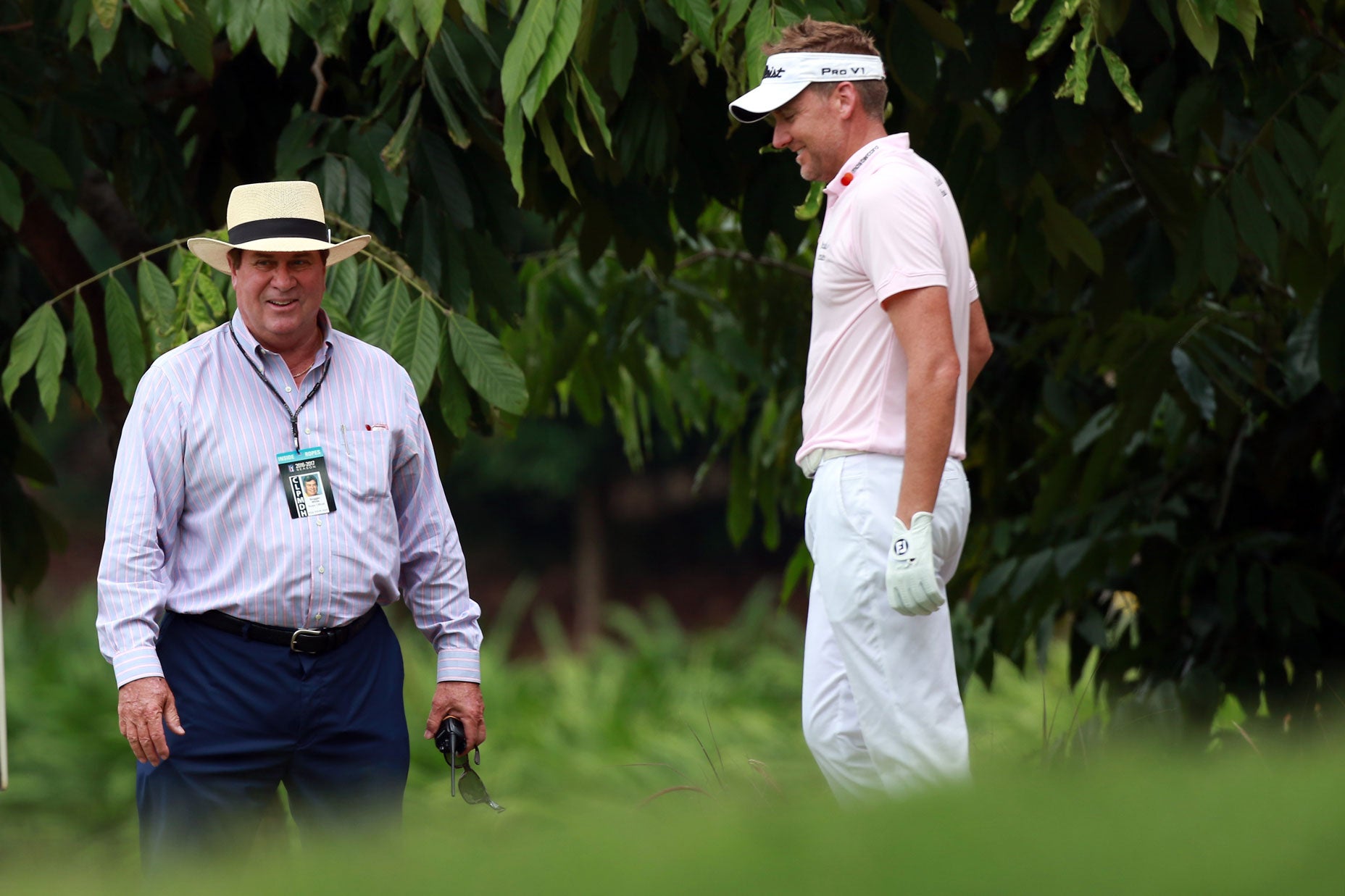
In 2013, at the BMW event in Chicago, White assessed Woods with two shots because Woods caused his ball to move, incrementally, while playing a chip-out from the woods. One shot for causing it to move. Another for not putting it back. A TV camera observed it all. White’s point was that Woods should have seen it himself, in real time. Rules officials call them as they see them, without fear or favor, as they must.
In 2019, White gave Patrick Reed a two-shot penalty at the Hero World Challenge, Woods’s off-season event. In layman’s terms, he improved his lie with practice swings in a waste bunker. There’s always, in White’s line of work, chapter-and-verse, Rule 8.1 in this case. And then there’s the basic logic of the game. You’re required to play your ball as it lies. By the time Reed played his shot, his lie was better than it was before he got over it.
One of the oddest rules issues White ever presided came in 2019, in Mexico, when Russell Henley realized, after the round, that he had violated the Tour’s one ball rule. He had, unknowingly, used a prototype ball at some point during the round, then signed his card.
“We had the damnedest time, trying to figure out what holes he used the wrong ball on, giving him the penalty shots on those holes, seeing what his score should actually be,” White said. Depending on Henley’s accounting he might have made the cut. In the end, he didn’t.
“He did the right thing,” Slugger White said, “and he knew it. He’s one of the best. I said to him, `This will come back to you ten times over.’”
Lives by the book. Henley’s, in that example and surely others. Slugger’s, for 40 years as a rules official. Before that, too.
Michael Bamberger may be reached at Michael.Bamberger@Golf.com

